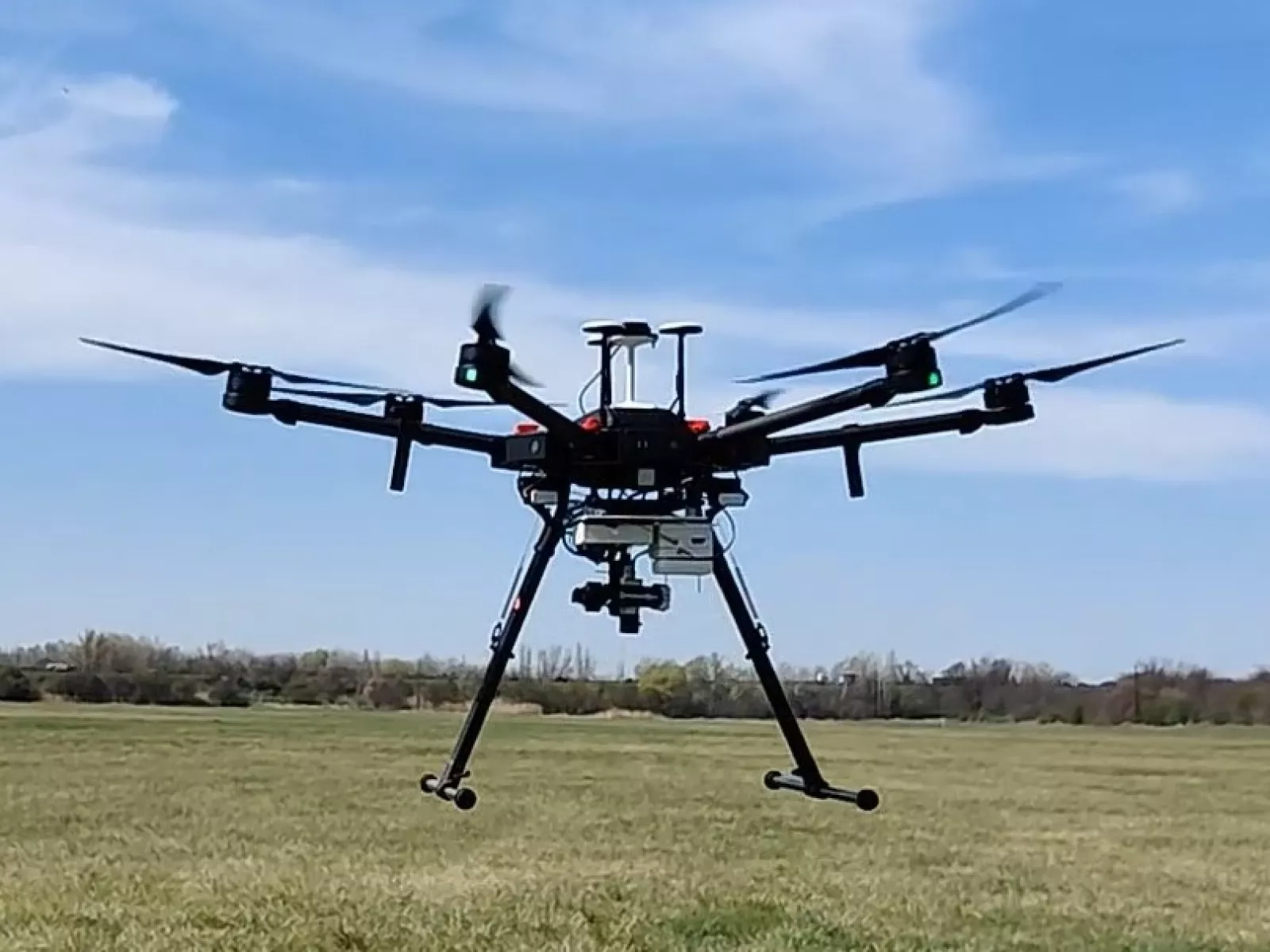
The recent test of the forerunner drone equipped with autopilot was a success. The drone was developed jointly by the Széchenyi University of Győr (SZE) and the ELKH Institute for Computer Science and Control (SZTAKI). The autonomous and camera stabilisation functions worked flawlessly in all the tests performed, so the device is now ready for targeted testing in urban environment.
The complex simulation of the forerunner drone concept, including that of the hardware elements, was presented last year. The development reached the first test of the proprietary on-board system (comprising a camera, a navigation sensor, an image processing computer and a gimbal) in April 2022. The system is hosted by a DJI M600 hexacopter. By May 2022, the development had progressed to flights with a self-developed autopilot and camera footage collection. The aim of the first flights, which were also recorded, was to test the camera stabilisation gimbal and the autopilot of the hexacopter. In these test flights, some extra weight loaded on the hexacopter. These flights were used also to test any electronic interference with the on-board system.
The autopilot provided the hexacopter with speed, altitude and heading reference signals. To do this, the experts developed autonomous control systems that allow hovering with position holding, climb and descent, turning to heading, approaching the designated coordinates and returning to the initial position. The on-board system is capable of moving the drone along a triangular orbit, stopping at decision points and turning the vehicle in the appropriate direction. The drone is also capable of autonomous continuous motion.
The autonomous functions worked without any flaw in the tests; a video recording the event can be found here below. The emergency stop function, which had been pre-developed and tested in a simulation environment, also worked correctly during real environmental tests.
The data required to develop the vehicle detection algorithm for the forerunner drone was collected by the system passing over the developers' own cars. The captured imagery was used to test the control of the gimbal mounted on the device and the stabilisation of the recording, as well as the vehicle detection algorithm. According to the flight data the gimbal maintains a vertical orientation usually within 2 – and maximum within 3 - degrees, as it is confirmed by the camera footage.
Vehicle detection was also tested on the footage with an algorithm trained in the UNREAL-Carla simulation and on real image databases. The former tends to lose vehicles, while the latter detects them continuously as seen in the test video. At the end of the test, the developers were able to locate also their colleague from the air using the camera image.
The development is realized in the framework of the project "Development of innovative automotive testing and inspection competences in the West-Hungarian region based on the infrastructure of the Zalaegerszeg Automotive Test Track GINOP-2.3. 4-15-2020-00009", as a part of the FT2 subproject "Autonomous Near-Earth Aerial Solutions”. The next step is to test the algorithms in a targeted urban environment, on the ZalaZone test track.